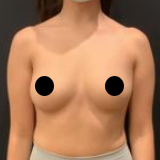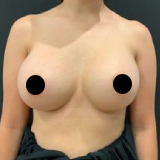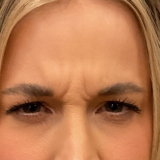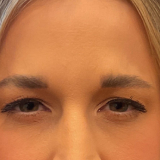Lipedema
Consultations offered at our three convenient locations in Austin, TX, San Antonio, TX and Westlake Hills, TX

Lipedema is a condition characterized by abnormal fat buildup, particularly in the lower body. Lipedema treatment is designed to help patients with lipedema improve their mobility and their overall quality of life. Lipedema is often misdiagnosed as obesity, but several key differences make it an entirely different condition. For one, lipedema fat is usually nodular in appearance and develops in a disorderly fashion that feels bumpy. For someone with a more severe form, the fat develops disproportionately in large, unnaturally-shaped masses. Successful treatment involves much more than simply applying a weight-loss regime.
If you have been diagnosed with lipedema, there is no reason you should have to live with feeling self-conscious about your body. The solution to attaining a body you can feel confident with is just one phone call away. At Austin Plastic Surgeon, our team of board-certified surgeons are not only knowledgeable in body contouring methods, but they will also take into consideration the specifics of your lipedema condition.
To get started today, use our contact form to inquire about our services, or call one of our office locations closest to you:
Contents
What is Lipedema?
Lipedema is a fat distribution disorder characterized by the abnormal accumulation of adipose tissue (fat), primarily in the lower extremities. Also known as “painful fat syndrome,” lipedema predominantly affects women. With lipedema, fat does not accumulate in a normal way. Bulges of fat appear lumpy and disorganized. Sometimes, the excess tissue overlaps and leads to chronic fungal skin infections and hygiene issues. Most often, it occurs in the buttocks, thighs, and calves, but some people may develop it in their arms.
With this type of tissue disorder, mobility, quality of life, and mental health are often compromised. Not only that, but individuals may also experience other symptoms such as pain, swelling, fatigue, and bruising. Though lipedema often occurs in obese people, losing weight often does not change the affected areas, and many may feel hopeless in their efforts to improve their appearance.
Stages of Lipedema
The severity of the distorted fat accumulation slowly worsens over time as it progresses through different stages.
- Stage 1: the skin may appear normal, but individuals may be able to feel small pebble-like textures under the skin. They may have some pain and bruising.
- Stage 2: the skin may begin to look uneven and exhibit some dimpling. Some may interpret it as severe cellulite with a swollen-looking appearance.
- Stage 3: the tissue will look inflated and have larger folds of skin and fat overlapping each other. Certain pockets of fat may stick out abnormally and walking may be difficult.
- Individuals with stage 4 lipedema will have lipedema distortions as well as lymphedema, a disorder in which the lymph fluid from the immune system builds up just under the skin.
What Causes Lipedema?
The cause of lipedema remains unknown, but researchers have gathered enough evidence to identify a variety of risk factors. Being female, having a BMI higher than 35, and having a family history of lipedema can all raise your risk. Insulin resistance and an excess of estrogen hormones have also been found to play a role in this condition. It is closely associated with certain genetic mutations related to fat metabolism, inflammation, and the lymphatic system. One hypothesis is that dysfunctions in lymphatic and vascular vessels cause the fat tissues to expand abnormally. (1) More blood capillary development explains why bruising easily occurs. With this condition, proteins in the blood can also exit tiny blood vessels more easily into the extracellular space (microscopic spaces in between cells), allowing lymphatic fluid to accumulate in this area.
Treatment Options
If you have been diagnosed with this burdensome condition or suspect you may have it, you should know that treatment is available. The unique characteristics of lipedema make it more challenging to treat, but you can restore body contours that you can feel more comfortable with.
Conservative Measures
If you are in the early stages of lipedema, you may be able to find some reduction in the appearance of lumpy fat with compression therapy. This may involve regularly using compression garments to minimize lymphatic buildup that causes swelling and fat expansion. Pneumatic compression devices that inflate and expose the affected area to compressed air can also create the same effect. Regular lymphatic massage and certain exercises are also popular conservative measures to look into. (1,2) Though following a restrictive diet does not specifically target lipedema, following an anti-inflammatory diet can mitigate the condition and serve your health overall. Other non-surgical options include lymphatic massage and physical therapy.
Medications
Certain medications can sometimes target the root causes of abnormal fat and swelling, giving you the tools to help control its progression. One study states that beta-adrenergic agonists, corticosteroids that control inflammation, diuretics that help the body remove excess fluid, flavonoids found in plant-based foods, and selenium supplements may be helpful, but there is little clinical research to support their effectiveness. (2) Other treatments include semaglutide and tirzepatide, prescription amphetamines, metformin for those with metabolic disorders, phentermine to control weight, and diosmin, another plant-based supplement. These can assist the body in combating inflammation, but they will not provide the same long-term, dramatic results as surgery.
Liposuction
Liposuction can offer you a way to slim down lipedema bulges without needing to undergo major surgery. With liposuction, your surgeon will simply need to make an incision that is only about a centimeter wide to gain access to a large area of subcutaneous fat. (3) They will have to utilize a long, thin tool called a cannula that safely and precisely suctions the fat through this small incision. While liposuction can debulk some of this mass, it cannot completely correct the skin contour irregularities. Still, you can expect to find significant pain relief as a result of this minimally invasive procedure.
Fat Excision and Skin Tightening Procedures
Excision surgery is a more comprehensive approach to smoothing out the lumpiness because it involves the removal of lax skin. Since lipedema most often occurs in the lower body, a thigh lift, thong lift, or butt lift may be able to accomplish much better aesthetic enhancement than liposuction alone. For patients that have lipedema of the arms a brachioplasty in combination with liposuction is an effective treatment option. At Austin Plastic Surgeon, we specialize in treating skin laxity, giving us an advantage over other facilities and helping patients attain their desired contours after weight loss and/or fat removal with liposuction.
Thigh Lift
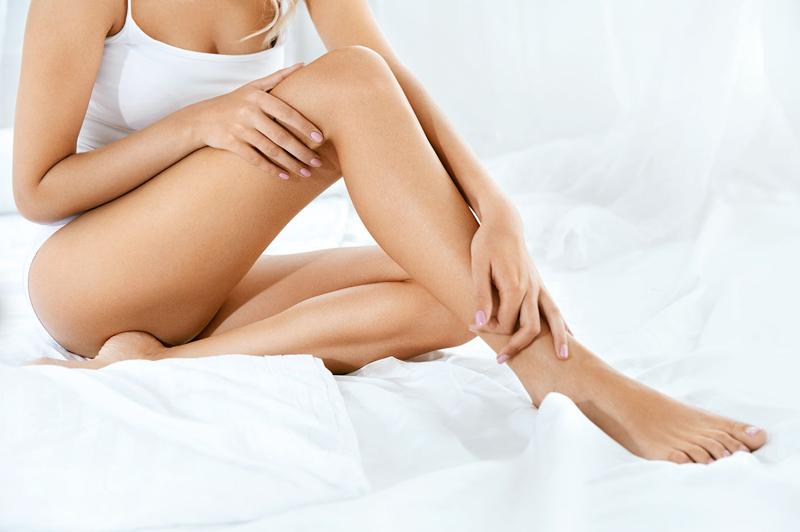
Depending on the area where the most fat development is, your surgeon will perform a bilateral, medial, or posterior thigh lift. For the medial method, they will create an incision within the inner thigh just beside the groin to create leaner contours of the inner thigh, eliminating excess tissue that interferes with walking. For a posterior thigh lift, they will center the incision just beneath each buttock to create a more flattering transition between the thigh to the buttocks. A bilateral thigh lift is arguably the most appropriate for lipedema since it sculpts the front and outer portions of the thigh. The incision extends from the groin to the outer hips. After removing loose pockets of fat and skin, your surgeon will suture the incisions and place surgical drains to allow the excess fluid to drain from the area. Doing so will speed up the healing process and reduce swelling. With lipedema, your surgeon will likely need to combine liposuction with your thigh lift, if they find the procedure suitable for you.
Butt Lift
A butt lift should not be confused with a Brazilian butt lift, an alternative procedure that involves fat transfer to volumize the sunken contours of the buttocks. A butt lift is designed to form a firmer, more youthful silhouette with the use of skin and fat removal techniques. After administering general anesthesia or local anesthesia with sedation, your surgeon will excise an elliptical section just above the buttocks to elevate and reshape the tissues and correct excessive skin and sagging of the the buttock. Your surgeon will give you a compression garment to protect the incisions and minimize swelling for a few weeks. Your surgeon may pair the procedure with liposuction to smooth out the flanks, enhancing the surrounding contours.
Thong Lift
A thong lift is superior to a traditional buttock lift because there is no noticeable, large incision required above the buttocks. Instead, your surgeon can make an incision within the inside of each buttock. By tightening and removing lax skin with these incisions, the procedure rotates the buttocks in such a way that promotes a perkier positioning without compromising on volume. Depending on the cosmetic outcome you want, your surgeon can also combine this procedure with liposuction.
Brachioplasty
If lipedema is present on your upper arms, your surgeon will tailor your brachioplasty- more commonly known as an arm lift– to resolve the excess skin and fat in this area. They will likely apply extended arm lift techniques that require an incision along the back of each arm. If necessary, they may need to extend the incision to the inframammary crease just under the breast. With this method, your surgeon can remove any lax tissue on the side of the chest, creating a smoother transition from the arm to the body. With this opening, they will remove fat and skin before carefully redraping it to its renewed contour.
Candidates for Lipedema Treatment
More conservative measures may be more suitable if you are in the first stages of lipedema, but those with later-stage lipedema may benefit more from surgery. For liposuction and excision procedures, you should be in relatively good health and have all conditions well-managed. Your surgeon will assess your medical history to ensure they prescribe the safest means of treating your condition. If you are a regular smoker and would like to undergo surgery, they will require that you quit a few weeks before your surgery to optimize your healing abilities as much as possible.
Personal Consultation
During your consultation at Austin Plastic Surgeon, your surgeon will evaluate the severity of your lipedema and all affected areas. They may ask you about the treatments you have tried so far and what kind of results you are aiming for. Lipedema is a complicated condition, so they will take into account all other health factors that will influence their decision. After a thorough discussion about your available options, they will let you know your next steps. If they suggest surgery, they will discuss details relating to preparation and recovery to help you better gauge what you can expect. No matter what you choose, your surgeon will be with you every step of the way to maximize your treatment plan.
To begin with a consultation today, call the Austin Plastic Surgeon location nearest you or fill out our online form. We will be in touch with you shortly to help you find an appointment time that works best for you.
Cost of Lipedema Treatment in Austin
The cost of your lipedema treatment will depend on the treatment technique most suitable for your body and your desired results for pain relief and cosmetic rejuvenation. Your surgeon will give you a detailed breakdown of all related costs during your consultation to ensure you are knowledgeable about every aspect of your treatment. For all estimated costs, visit our plastic surgery pricing page.
To help patients navigate potential insurance coverage for some lipedema treatments, Austin Plastic Surgeon has teamed up with https://coverlipedema.com/.
FAQ
Is lipedema caused by obesity or overeating?
Lipedema is not directly caused by obesity or overeating. While weight gain may exacerbate the cond
Can lipedema be treated without surgery?
Non-surgical approaches, such as specialized compression therapies, lymphatic drainage massage, and physiotherapy exercises, can help manage lipedema symptoms and support surgical interventions. However, to achieve optimal results and significant fat reduction, surgical procedures such as liposuction are often necessary.
Can lipedema be cured?
While there is currently no permanent “cure” for lipedema, there are effective treatment options available that can significantly reduce the associated symptoms and improve quality of life. These treatments focus on reducing excess adipose tissue and managing related symptoms to provide long-term relief.
References
- Bouillon VN, Hinson CS, Hu M, Brooks RM. Management of Lipedema Beyond Liposuction: A Case Study. Aesthetic surgery journal. 2023;5. doi:https://doi.org/10.1093/asjof/ojad088
- Buck DW, Herbst KL. Lipedema: A Relatively Common Disease with Extremely Common Misconceptions. Plastic and Reconstructive Surgery – Global Open. 2016;4(9):e1043. doi:https://doi.org/10.1097/gox.0000000000001043
- Venkataram, Jayashree. “Tumescent Liposuction: A Review.” Journal of Cutaneous and Aesthetic Surgery, vol. 1, no. 2, 2008, p. 49, https://doi.org/10.4103/0974-2077.44159.
